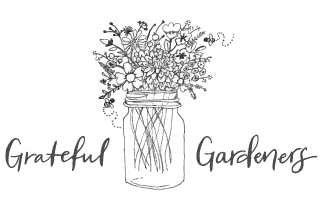
our green methods
GREEN IS GOOD
WE ONLY USE OMRI LISTED PRODUCTS
To date we do not have USDA Organic Certification (however we are on our way) for our flower farm. A good first step towards achieving this goal is to always use pesticides, fertilizers, and treatments on your farm that are listed by the Organic Materials Review Institute. We highly encourage consumers, farmers, designers, and anyone looking to buy produce or flowers to read about OMRI and how they facilitate the organic growing community. It gives us a quicker path to certification when the time comes.
NO TILL AND COVER CROP PRACTICES
There are few practices in agriculture that have been around as long as tilling has. It was, and still is at a lot of farms, the reliable method to break up hard packed soils and mix in fertilizers, striving for that fine tilth we know plants love. What has become clear is the very process we thought was beneficial to plants actually destroys the soil ecosystem or soil food web and starts a farm down a road of perpetual catch-up to maintain soil fertility. It means more and more fertilizer, more and more environmental impact, and less and less plant health. No till and cover crop practices teach us that if we simply add in soil organic matter via compost and mulches, build on that each year, and fix nitrogen in the off season, our soil stays healthy and requires little use of artificial fertilizers, if at all. And the plants respond with superior immune systems, and more fruitful harvests.
More info on no till and cover crop practices
WORM and compost TEA FERTIGATION
The holy grail of soil fertilization is simply amplifying or multiplying what is already present in the soil that produces a healthy plant, specifically worms and bacteria. It’s been proven over and over that a healthy soil food web requires robust populations of both worms and bacteria of all strains. The decomposing activity of these abundant creatures releases many of the macronutrients (Nitrogen, Phosphorous, and Potassium), as well as the micronutrients (Calcium, Magnesium, Iron, and many others), that plants must absorb to grow and function. By inoculating and then incubating water with compost from standard sources (home grown or commercial) or worm compost, we can produce an aerated, powerful fertilizer that plants can immediately harness and take advantage of. Fertigating is the process of adding fertilizer through irrigation lines and seeding the soil directly with those microbial populations and nutrients so that roots can absorb them quickly. If your soil health is intact, this soaking of fertigated tea should provide a long lasting boost to plant growth and vigor.
More info on worm tea brewing
More info on fertigating
AQUAPONICS: THE GREENEST WAY TO GROW
Aquaponics is an ancient technique once used by the Aztecs and other primitive cultures.It harnesses the natural evolution of two species mutually benefiting one another; fish and plants. Fish are continuously excreting waste products through urine, feces, and via their gills. This is their way of removing excess nitrogen from their bodies as well as other trace elements. But if the water they’re living in is not somehow cleared of this waste, it quickly becomes toxic to them. This is where plants come in. Plants eagerly absorb nitrogen, phosphorous, potassium, and other micronutrients from the soil and will gladly accept the abundant flow of fish waste. Thus aquaponics was born, where an aquarium holds the fish, water is continuously pumped out of the tank and into a grow bed, plants in the grow bed absorb the nitrogen from the water and in essence, clean it, and finally the cleaned water is returned to the fish. Then the whole cycle repeats. The reason this is such a green way to grow plants is because it is basically a closed system with the only input being fish food. The benefits of aquaponics are numerous; it uses 90% less water than soil based agriculture, plants have been shown to grow as much as twice as fast, there is no weeding, there is little need for pesticides, plants can be grown at waist height alleviating back breaking labor on the farmer, and plants can be grown year round when the system is enclosed in a greenhouse.
More info on Aquaponics
Aquaponics in action
We got our first bloom!
Our Fleurvana Presentation on Sustainability
We were privileged to be invited by Shawn Michael Foley to the 2021 Fleurvana Summit on “Regeneration” earlier this year. He asked us to generate a video for the all-virtual conference on sustainable flower farming, which we are always eager to talk about! In the end we spent considerable time and a small amount of money to produce a more polished demonstration of both the floriculture and floristry world and how “dirty” it truly is. Please enjoy and let us know how you feel about the topic and what you might want to do to help the cause!
Browse our floral selection
Whether you’re a designer, florist, or just love flowers, check out our beautiful selection of botanicals.
american grown flowers
Do you know where your flowers come from? You might be surprised by the answer and why it’s so important.






